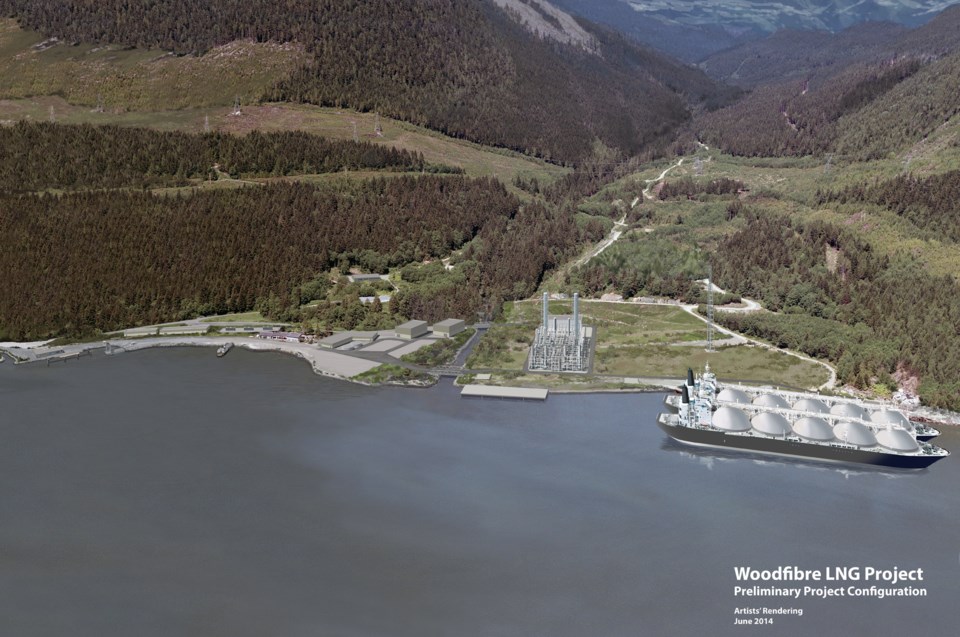Squamish council got some of the answers they were looking for, but not all.
Woodfibre LNG’s replies to Squamish questions relating to its planned air-cooling method were discussed at the community planning and infrastructure meeting Tuesday.
Woodfibre LNG received its provincial Environmental Assessment Certificate in October of 2015. When the company switched from its original plan to use a sea-cooling method to air-cooling in October of 2016, the company’s provincial Environmental Assessment had to be amended and opened up for public and local government feedback.
The change to air-cooling was made in response to Squamish and community concerns that sea-cooling would have a negative impact on marine life.
During the public comment period on the amendment, the District of Squamish asked how changing to the air-cooling system would affect various assumptions made in the original environmental assessment, including its impact on greenhouse gas emissions, animals and noise.
The questions and replies were funneled through the Environmental Assessment Office and not through direct communication between Woodfibre and the District.
In terms of emissions, Woodfibre said the impact will be about the same as seawater-cooling.
“By adjusting the number of fans in use at any given time, energy consumption for air-cooling is expected to be equivalent or less than the energy consumption for seawater cooling,” reads the reply submitted to council Tuesday.
The plant will be powered by BC Hydro electricity – which generates lower emissions than gas – and the emissions will be monitored annually, according to Woodfibre LNG.
Asked by the District about the impact the provincial government’s “eDrive” subsidy will have on other BC Hydro ratepayers, Woodfibre LNG noted the rate it will get for Hydro is the same as “any mine, pulp mill or factory in B.C..”
The company will also have to pay for connecting BC Hydro and creating a transmission system, Woodfibre stated.
Another question asked of Woodfibre LNG related to birds and bats and if the air-cooling device could harm them.
Brown Myostis, a type of bat that is known to frequent the area around Woodfibre, is considered a “species at risk.”
Woodfibre officials replied that there will not be additional impact due to the change to air-cooling.
“The cooling fans are shrouded and oriented horizontally, which will help to protect bats from the fans,” the reply read.
The District requested an analysis of the cumulative effects of noise generated by the air-cooling system, based on all the projects in the area, including up-stream run of river projects.
Woodfibre replied that the “sound will be less noisy than normal conversation within 1.5 kilometres of the Woodfibre LNG plant.”
The District also requested a 3D mockup of the new cooling system and other cumulative project elements.
The District had asked for, but not received, a mockup that showed all project elements such as the pipeline and Hydro transmission lines in the original environmental assessment as well.
“For clarity, neither the FortisBC pipeline within the project area nor the BC Hydro interconnection infrastructure are a considered project components as they are not within the scope of the project,” read Woodfibre’s reply.
Mayor Patricia Heintzman directed District staff to ask again for the modeling.
“Basically, respond that they didn’t answer our question,” Heintzman said.



